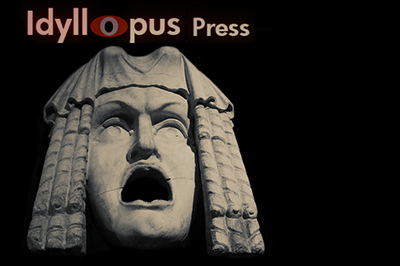
Go to Table of Contents of the analysis (which has also a statement on purpose and manner of analysis and a disclaimer as to caveat emptor and my knowing anything authoritatively, which I do not, but I do try to not know earnestly, with some discretion, and considerable thought).
Kubrick used pastels of First Nations children to decorate the Overlook. These were the art of a Canadian (non-native) woman by the name of Dorothy Marie Oxborough.

Figure 1 above shows the boy who is to the left of the exit/entrance to the Overlook used toward the film's end. Figure 2 shows the girl who is to screen right of the above-mentioned doors. Figure 3 shows the girl who is looking over Danny when, after the ball is rolled to him, he stands and begins to walk down the hall to room 237. There also are Oxborough pastels to the left and right of service hall double doors we see as Wendy ascends the stairs in the staff area, in the 4 p.m. section, looking for Danny. The pastel on the screen right of the doors seems to be the same as Figure 2, but I'm unable to get a clear enough look at the screen left image to see which of Oxborough's pastels it might be.
Oxborough pastel in a 2nd floor hall near room 237.
Oxborough pastel in a stairwell of the employee quarters.
Oxborough pastels alongside lodge entry doors.
Because of the maze aspect, with which is associated the Minotaur, we can wonder if Kubrick chose the pastels of Dorothy Marie Oxborough due her name.
The lodge was said to have been built on American Indian ground, and there are American Indian motifs said to be worked into the decorations of the lodge. These pastels are part of that American Indian theme.
Dorothy did a number of these pastels, of which prints were made that were popular and sold like crazy. I read images of these children even ended up on sugar packets. They were a money maker. As kitsch (for these are kitsch), they remind of the prints in Alex's parents' home in A Clockwork Orange, of which we get a good view when he is let out of prison and returns to find his bedroom has been rented.
The entry of Alex's home.
Alex mimes the posture of a woman in one of the prints when he looks inside his room and finds it completely changed.
The entry of Alex's room viewed from the door of his room.
These kitsch prints tend to address the viewer directly, staring out at us. The prints of the children give also the sense of watching the action, being attentive to it, relating to the viewer as well.
Dorothy is reported to have done studies of children of at least a couple of indigenous nations who had home territory in Montana, not that one would guess it from many of her images, which are stereotypical, almost cartoonish, and also are not very individual when it comes to depicting children, relying also on a rather cartoonish template in that respect, though these three chosen by Kubrick for use in the film aren't as cartoonish as some of Dorothy's other images. Researching as best I can online, I've looked at a lot of her work and she was actually an excellent pastel artist--I've seen very personal, good, non-stereotypical pastels she did of indigenous individuals, including a beautiful one of a mother and child. Dorothy did real art, and she was well known in artistic circles, which she likely wouldn't have been if she was only concerned with producing kitsch. Perhaps she felt she was introducing people to First Nation children and that the world would respond most to kitsch. But these so-called portraits infantilize and the children are sometimes dressed in highly inappropriate regalia such as fully feathered bonnets. People loved these images just like they loved stereotypical kitsch art from earlier eras of white children wandering about with angels or Jesus, and big eye children prints produced by other artists in the 1960s and 70s.
In selecting these particular pastels, Kubrick went with what was Dorothy's less potentially offensive images in in her kitsch depictions of native children, but he did not opt for her most human and personal work. He stuck with cute, with kitsch, that animates the walls of the Overlook at points and makes us feel a sense of intimate liveliness peeking out of the plaster. They are far afield from the couple of paintings by Norval Morrisseau, an Anishinabe artist, that Kubrick places just outside Stuart's office and also in the foyer of the secondary entry. Morrisseau's The Great Mother commands attention. Even with the rather grim circumspection in the expressions of the first two figures of Oxborough's, her work panders to sentimental tastes, but context makes all and in context of the Overlook these images adopt an attitude of eerie observation.
September 2018. Approx 719 words or 1 and 1/2 single-spaced pages. A 5 minute read at 130 wpm.
Return to top of page
Return to Table of Contents for "The Shining" analysis
Link to the main Kubrick page for all the analyses






